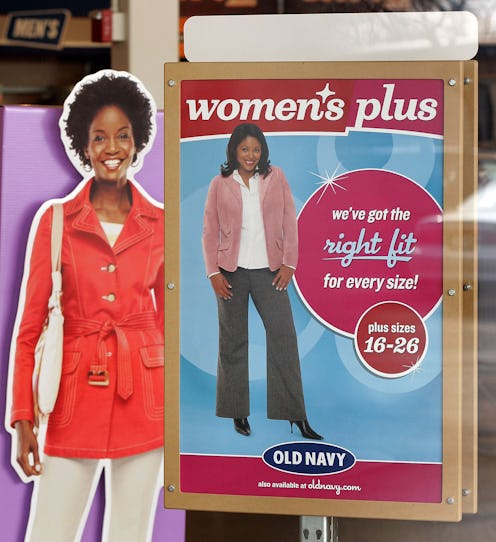Fashion
Curvissa's New Study Sheds Light on Plus Fashion
This year, plus-size clothing did what very few sectors were able to do in this economy — it grew. It grew from the previous year's earnings by just under a billion dollars, to be a little more precise. Despite being a segment of shoppers that equates to about 65 percent of American women, plus-size women have previously had precious few options when it comes to getting dressed fashionably. You'd think that businesses and savvy investors would step up their game when there's clearly money to be made, but the current climate in fashion leaves a lot to be desired. Now, potential customers are speaking out about how they interact with clothing and fashion, and there's no excuse for not doing right by plus-size women anymore. When it comes to how clothes are marketed to women of size, there are some things certain brands would like to see change. UK retailer Curvissa has revealed the results of a study that asked 600 women what they wanted from both the media and fashion retailers in terms of plus-size fashion. And the results say a lot about how traditional marketing methods are missing the mark with their target customers.So, what do plus-size women want? Well, when it comes to the clothes they want to put on their bodies, they don't want much different than straight-sized women — as designer Lela Rose found out recently (although plus-size women have known this forever). In Curvissa's study, the vast majority of participants indicated that they felt the "average woman" isn't represented in the media, and that mannequins in stores don't give a good representation of actual body shapes. It's no surprise that "one size fits all" is as pointless with mannequins as it is with clothing — those golden proportions of tiny waists with curvy hips and bust are still coveted, even in the plus-size community.
Perhaps the most/least surprising revelation (depending on how well-acquainted you are with plus-size clothing), is that plus women prefer to do their clothes shopping online. In shops that carry a mix of straight and plus, the larger sizes are either only available for sale online or sold in such a small section of the actual store that it can feel almost insulting. As for plus retailers, the stigma of going into a "fat girl store" can still be very real in this fat shaming society. Even though I started identifying as fat almost two years ago, I set foot into my first plus-size store just months ago.
Before that, I would quickly and shamefully flip through the tiny plus section of Forever 21 or stick to baggier/more billowy styles from straight-size retailers, because I felt like if I finally caved and went inside a plus-only store, I was really (for real) fat. And society had told me that such a thing is bad. Unfortunately, sizing of clothing is erroneous, and most plus-size clothing doesn't give allowance for different body types and proportions. So shopping online and "guessing" for fit is just as frustrating as shopping in-store.
The report also found that plus-size women are half as likely to take inspiration from celebrities — perhaps because there are still so few plus-size women walking red carpets and popping up on our TV each week. They're more likely to take inspiration from other plus women on social media, and wish that brands would feature more inspiring women in their campaigns (often name-checking athletes, food writers and Adele as possible options).
While some of these statistics and insights are definitely shaped by the pitiful options available (both in retail and media), I think they're proof of a wider endemic in fashion. When these women are speaking out, we need to pay attention. Plus-size women often face the more extreme end of the body hate that society has reserved for figures that are outside the very tiny parameters of acceptability. These are messages that reach everyone and affect girls and women alike. While plus fashion has been historically behind the trends (because being fat meant you'd given up on what you looked like apparently), they can be the ones shaping the conversation we have around these issues.
I'm making your 2015 fashion resolutions for you, retailers: feature more women who aren't necessarily models, showcase a better representation of body types, use more women of color, bodies with a variety of mobility/ability, have more styles available in stores, make better-fitting and more consistently sized garments, and showcase imagery and campaigns that contribute to an atmosphere where all sizes are seen as beautiful. We all deserve better.
